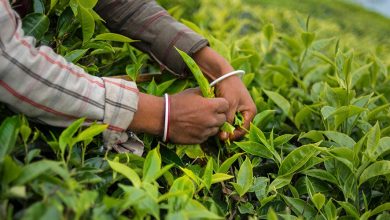Tanzania edges toward trade, industry recovery

TANZANIA’S trade and industrial sectors are showing strong signs of recovery, driven by improved business conditions and expanding market opportunities across the region and beyond.
The exports have steadily increased from 6.38 billion US dollars in 2021 to 8.7 billion US dollars last year, reflecting a robust growth trajectory. This surge underscores the country’s expanding presence in key regional and international markets.
The industrial sector has also demonstrated resilience, with its contribution to the national GDP improving and growth rates picking up steadily in recent years.
ALSO READ: Tanzania to establish bee venom processing industry
President Samia Suluhu Hassan said when addressing the 12th Parliament that these gains come as the government continues to implement reforms aimed at enhancing production capacity and supporting local manufacturers.
The Minister of Industry and Trade, Dr Selemani Jafo said when presenting the ministry budget that the country continued to strengthen its trade relations with various countries globally.
During that period, the value of goods exported to the EAC market was 1.163 billion US dollars compared to 1.180 billion in 2023, representing a decline of 1.4 per cent.
“The decrease was due to reduced exports of manufactured goods, cereals, fertilisers, salt, fish, and fish products to Rwanda and Burundi,” Dr Jafo said.
Last year, goods worth 527.3 million US dollars were imported from the East African Community, compared to USD 523.6 million in 2023, representing an increase of 0.7 per cent.
“The increase was attributed to the easier availability of certain products from neighbouring countries through border markets and consumer preferences,” Dr Jafo said.
Meanwhile, there was an increase in exports to other regions, particularly the Southern African Development Community (SADC) and the African Continental Free Trade Area (AfCFTA).
Southern African Development Community (SADC)
The minister said the value of goods exported to the SADC market last year was 2.968 billion US dollars compared to 1.727 billion US dollars in 2023, representing a significant increase of 71.8 per cent.
“The growth was driven by increased exports of various goods such as minerals, avocados, coffee, tobacco, tiles, garments, mosquito nets, cement, soap, and cosmetic oils,” he said.
ALSO READ: SADC experts join efforts to strengthen regional energy security
Additionally, in 2024, goods imported from SADC countries were valued at 786.4 million US dollars compared to 786.1 million US dollars in 2023, a slight increase of 0.04 per cent. This was due to increased imports of fertiliser production chemicals, mixed juices, iron sheets, and steel products.
Trade between Tanzania and Other African Countries – AfCFTA
The exports to African countries under the AfCFTA framework in 2024 reached 3.946 billion US dollars compared to 2.341 billion in 2023, marking a 40 per cent increase.
“This growth was driven by access to new markets under AfCFTA, including Morocco, Nigeria, Senegal, Ghana, Egypt, Ethiopia, Algeria, Djibouti, Somalia and Guinea. Key exported products included coffee, tobacco, glass, cereals (rice and maize), spices, and sisal fibers,” Dr Jafo said.
ALSO READ: Tanzania reaps fortune from AfCFTA membership
Furthermore, last year, the value of goods imported from African countries was 1.374 billion US dollars, down from 1.430 billion US dollars in 2023, representing a decrease of 4.04 per cent.
“This was largely due to reduced imports of industrial sugar, pharmaceutical products, and gypsum plasters from Egypt,” he said.
Market In 2024, the value of goods exported to the European Union market was 686.3 million US dollars compared to 633.5 million US dollars in 2023, an increase of 7.6 per cent.
The growth was attributed to increased exports of cocoa, avocados, tobacco, coffee, and minerals. In the same year, imports from the EU amounted to 1.267 billion US dollars compared to 1.174 billion US dollars in 2023, representing a 7.3 per cent increase. The increase was due to higher demand for raw materials and machinery used in industrial and mining production.
Asian Continent Additionally, last year, the value of exports to some Asian countries particularly China, India, Japan, Singapore, and the United Arab Emirates— was 2.840 billion US dollars compared to 2.924 billion US dollars in 2023, a decrease of 2.9 per cent.
“The decline was due to shifting market demands and increased competition from other countries offering similar products,” he said.
Key exports included minerals, legumes, cashew nuts, avocados, cotton, goat meat, vegetables, tobacco, sesame, cocoa, and groundnuts. On other hand, imports from some Asian countries in 2024 were valued at 5.514 billion US dollars, down from 8.409 billion US dollars in 2023, representing a sharp decrease of 34.4 per cent.
“This was attributed to reduced imports of capital goods, plastics, and transport equipment,” Dr Jafo said.
Commonly imported items included vehicles, motorcycles, gas and petrol oils, mobile phones, industrial-use sugar, white cement, and steel products.
However, recent data from the Ministry of Industry and Trade reveals improving sectoral performance in 2024, suggesting that the country is edging closer to pre-pandemic levels, supported by ongoing efforts to enhance the business environment.
In 2020, during the height of the global COVID-19 crisis, the industrial sector contributed 8.4 percent to the Gross Domestic Product (GDP), slightly lower than the 8.5 percent recorded in 2019. The growth rate slowed to 4.5 per cent, down from 5.8 per cent in the previous year, primarily due to disruptions caused by the pandemic.
ALSO READ: UN: Link tech, agriculture to drive vision 2050
Despite these challenges, the sector expanded employment from 336,797 in 2019 to 370,485 in 2020, the ministry’s budget speech showed That same year, the smallscale industries and small business sub-sector accounted for 35 per cent of the GDP and provided employment to over eight million Tanzanians, making it the second-largest source of jobs after agriculture.
The trade sector also experienced a slowdown in 2020, contributing 8.7 per cent to GDP down by 0.1 percent from the previous year. Its growth rate dropped to 2.1 per cent, compared to 5.5 per cent in 2019.
However, the sector played a critical role in export growth, enabling the sale of goods worth 6.06 billion US dollars in 2020, up from 5.00 billion US dollars in 2019, a gain attributed to improved domestic production and market access. Fast forward to 2024, the Ministry’s budget statement indicates an upward trend.
The industrial sector grew by 4.8 percent in 2024, an improvement from 4.3 percent in 2023. Its contribution to GDP rose slightly to 7.3 per cent from 7.0 per cent the previous year.
While still below the 2020 contribution level, the improved growth rate reflects a recovery in industrial activities.
The trade sector also gained ground. It contributed 8.6 per cent to GDP in 2024, up from 8.4 per cent in 2023, with a growth rate of 4.8 per cent, compared to 4.2 per cent a year earlier.
ALSO READ: Private sector–friendly budget targets growth, jobs, industry
“This performance was driven by continued improvements in the business environment,” said Dr Selemani Jafo Minister for Industry and Tarde when presenting the ministry 2025/26 budget recently.
The 2024 figures mark a turnaround from the pandemicera lows and suggest that the country is steadily moving toward economic normalisation. The consistent growth in both sectors points to increased resilience and the impact of government efforts aimed at improving regulatory and investment conditions.
As the government continues to prioritise industrialisation and trade development, stakeholders are watching closely to see whether the country can not only reach but surpass its pre-pandemic economic benchmarks.





